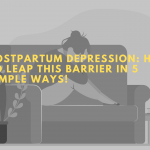We have covered the general overview of the condition, discussed in detail the causes and stages of mental retardation. We also took a look at the historical aspect of mental retardation and how has society evolved to view this condition with time. In this post we talk about the methods by which mental retardation can be managed or contained; the way the patients are cared for and advances made in the field of psychology so as to treat this condition.
Firstly, we’d want to clear the air as to why there’s no direct medical procedure that can treat mental retardation. In the last post, we discussed the causes of mental retardation – genetic causes, hereditary, trauma, and environmental aspects. What we need to comprehend here is mental retardation is caused by when the brain undergoes some serious trauma or injury. When that event occurs superficially brain recovers but the cellular structural organization may get disrupted. Now depending upon the age of the person undergoing the trauma, the brain recovers itself. Younger children have higher plasticity (plasticity here means the ability of an organ to heal itself). However, even the brain with higher plasticity cannot undo the trauma to one hundred percent. There are also other complex causes that might hurt the brain.
What is more important to understand is the fact that the brain’s cells – neurons do not multiply after birth. What it means is that any damage to a neuron can lead it useless as it cannot be replaced by another neuron. This is the reason why there are no direct medical procedures to contain or revert the damage that manifests mental retardation.
However, we can always train the patients suffering from this illness, to do their daily activities and to some extent even they can learn how to participate and contribute to society.

MANAGING MENTAL RETARDATION
With the advent of a better understanding of human behavior and ideas, psychologists have worked out better definitions for classifying intellectual disability from other mental illnesses. It is important to know that intellectual disability is not even a mental illness but a condition that manifests overtime when the brain has gone through some trauma. It now can be distinguished from other illnesses like schizophrenia or anxiety. This condition can, however, be avoided if the underlying diseases are diagnosed and they are treated in time.
There are many agencies and hospitals across the globe that provide care for the ones suffering from mental retardation. There are state-run, for-profit, non-profit, private organizations that specialize in providing assistance and housing the mentally retarded a safe environment. They have departments that have staffed residential apartments, rehab programs, special care schools, workshops where the intellectually disabled can learn particular skills and they can earn some employment. There are workshops that train the disabled with social skills and how to function in society. There are also workshops and programs for the parents of kids who have intellectual disabilities. Apart from that, there are programs for people who have a difficult time performing daily life activities. They make take a longer time to learn these skills, but the final goal is to give them some degree of independence. The goals can be as small as learning how to make their bed to earning employment. People who have intellectual disabilities keep on learning and acquiring skills throughout their lives. The coordinated efforts of caregivers, family, doctors can help them build the necessary skill set for survival.
There are four types of psychological interventions that are used to care for the disabled –
- PSYCHOSOCIAL TREATMENTS
- BEHAVIORAL TREATMENTS
- COGNITIVE-BEHAVIORAL TREATMENTS
- FAMILY ORIENTED STRATEGY
Psychosocial treatments are used for children before and during preschool time. The early intervention encourages exploration, mentoring in basic skills, guided rehearsals for acquired skills and exposure to a rich language environment. In a study of a hundred children who showed signs of ID, the ones that were exposed to psychosocial treatments, they displayed a better test score than the control group of the students. By the time they were young adults, they showed a better educational grasp and fewer behavioral issues than that of the control group.
Behavioral treatment includes learning language and social skills. Typically, in training therapist teaches the kids the language using positive reinforcements. Using color, shapes, and textures, are used to make the kids learn and how to communicate their intent effectively. Similarly, older individuals are also taught various skills through this method. They can learn how to take directions, initiate a conversation and sharing. Even more so they are taught how to interact with the non-disabled ones in an efficient manner.
Cognitive Behavioural treatments include a combination of above-specified treatment types. This helps in developing advanced skills like math, language, and logic. First, they’re taught to be a logical thinker and do planning before executing any task. Then they are taught to choose an apt strategy for a particular task.
Finally, a family-oriented strategy empowers families with skillsets they will need to maintain a child that has an intellectual disability. They need to encourage their child, provide them with a support system. They are taught about being sensitive towards their kid and as well as asking their support staff or neighbors to be a bit sensitive. As the patient ages, their families are made to acknowledge topics like employment, relationship, and housing.
Although there is no direct medication for the intellectual disability, people with ID might have other comorbidities for which they are prescribed some medications. Mood stabilizers like antipsychotics might be prescribed for the ones suffering from autism and ID.
Individuals with ID are, generally at a higher risk of having other comorbidities like Epilepsy and other neurological disorders. Adults have a higher risk of behavioral disorder, depression, diabetes. It is also seen their life span is usually 16 years lower than non-disabled. Reasons can be them not getting proper healthcare due to communication barriers, diagnostic overshadowing, absence of apt healthcare.
With this, we’ve effectively covered the aspects of intellectual disability. Reading this can give you some idea about how difficult the lives of the ones suffering from ID are. There is not much that medicine can do for them apart from making their life a bit easier. We hope reading this gave you some insight into the struggles of the people suffering from ID and also equipped you with sufficient knowledge. thank you for reading, we’ll see you next time.








